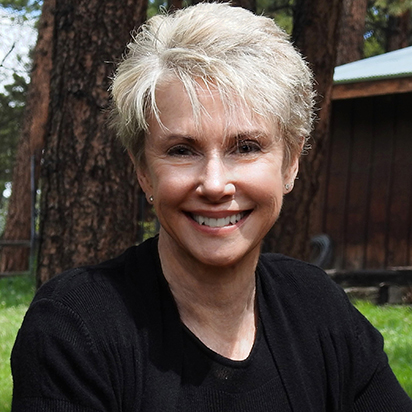Being a part of a growing small business is one of the most fulfilling places to be. It’s exciting to see plans come together and people around you grow into next level professionals. Some of my best memories are working with a solid team to work through transitions. That’s the hard part though. Growth isn’t just scaling what you’ve been successful at. As you move through that growth you soon learn that there are many steps where you now need to be different. Your team needs to be different. I’ve seen companies struggle with those transitions, despite having tremendous success leading up to that point.
Recently, I’ve had some interesting conversations with a fellow colleague in the space, Kate Ripp. Kate has made it her career to provide best practice thoughts and mentoring to small companies that grow from 1 or 2 people to as large as 100. She specializes in those transitions and helping leaders navigate and grow through them. Kate’s bio can be found at the bottom of this post.
Jay: I appreciate the dialogue Kate, having lived through this myself. Many of the companies I talk to every week have already made it through the early stages and are in that 40-80 people range. For that company that has had some early successes and may be in that range, what catches owners by surprise and what can they do to recover?
Kate: It’s the surprises that really get a business owner! I’ve had experienced business owners say to each other “Watch out when your company hits 50 employees, everything changes!” By the time you get to 50 employees, you’ve already seen your fair share of changes in your organization as it grows. In startup, you developed a working business model. Then you ramped up your sales, production capacity and staff using your proven business model. As you continued to grow, and you hit 20 employees, you learned that there was just too much going on for you to wear all of the hats. You had to learn to delegate and then hire or train a team of managers focused on the operational aspects and who hopefully, transitioned the company into a professionally run organization.
But when you hit Stage 5, 57-96 employees, the challenges you face sneak up on you.
Jay: So, how can you prepare for those challenges and understand the critical issues you’ll face?
Kate: Stage 5 has many more moving parts than ever before and requires a consistent source of fuel—sales! To support expanding sales, the company must start integrating the leadership team and organizational processes. The #1 non-negotiable rule for this stage it to “integrate the management team into an inter-dependent, execution-focused leadership unit.”
Stage 5 is all about leadership integration. Getting your leadership team to play well together is the biggest challenge. I believe that an organization gets better when the leader and the leadership team get better. That starts with a clearly defined vision that trickles down and ignites the hearts and minds of every employee. A vison has two concepts: what you can imagine and what you can see. At this stage of growth, you need to ensure a strong vison to help people embrace the future.
Also, with the company of this size, mangers must feel confident about their roles, their authority and their responsibilities. Frustration grows daily if less experienced managers struggle to understand their role and manage process. Staying ahead of your problems requires someone who is capable of getting buy-in from those managers to commit to the goals of the organization. Integrating the leadership team to support one another improves operational performance through coordinated execution.
You need to focus on four new critical processes: Financial, Sales, Human Resources, Strategy and Planning. Your biggest challenge as a Stage 5 leader is your ability to provide strong leadership direction to your mangers and integral to this is upgrading and fine-tuning processes.
You are no longer a small company. You are a complex environment that requires vigilance to protect the original DNA that makes your company great. Maintain a dedicated focus to ensure that what made you great when you were smaller isn’t lost in the challenges that come with growth. A good mantra for fast-growing, ambitious companies is “be big but act small.”
Find ways to get people aligned behind the most critical issues of the company. Each manger has their own set of issues, agendas, and opinions. To become a truly integrated team, everyone must align on what needs to be done first, how it will get done, who will own it and quantify outcomes when the issues are resolved.
Jay: I know business owners are often great problem solvers and with the right information and advice can navigate these steps in growth. However, I know from personal experience that getting an outside third-party facilitator and mentor can really ratchet up that effort. You’ve helped a bunch of companies as that type of facilitator. Can you talk a little about that dynamic and how that unbiased view can make a significant difference in both quality and speed of that personal and corporate development?
Kate: What I have found in my years of working with business owners is that it’s not only about what they know and figured out along the way. It’s about drilling down to the root cause of issues, those “hidden agents” that are literally invisible to owners. You don’t know what you don’t know. Building healthy, sustainable organizations means being able to successfully navigate your growth curve—that tricky balance between chaos and equilibrium. As a facilitator and growth coach, I give them headlights into their future, drill down to the hidden obstacles and guide owners and their leadership team to eliminate them.
Jay:
Thanks for the insights, Kate! These are deep topics and we only got a chance to scratch the surface. We’ll do some deeper dives in the future and of course you’re easily reachable to people with deeper appetites to learn and evolve their companies.
More about Kate Ripp:

Before founding her coaching and consulting practice, Mission Critical Teams, in 2000, Kate Ripp spent more than 20 years in management and leadership roles. While in these roles, she focused on forming and forging cross-functional teams related to business development, training, and large-scale account management and maintained a strong focus on executing initiatives as well as developing managers and leaders. Kate now works primarily with leaders and teams of small to mid-size businesses (typically 100 employees or less) who have a desire to improve their contribution to their organization. She pulls from her own experience and results-driven methodologies to develop internal alignment and action plans designed to enhance performance and bottom lines. To learn how a proven formula building a healthy, sustainable organization, contact Kate at [email protected] or connect with her on LinkedIn.


